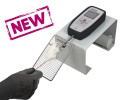Authors
P.H. Cheng, C.L. Li, Y.F. Chang, S.J. Tsai, Y.Y. Lai et al.
Lab
College of Medicine, National Cheng Kung University, Tainan, Taiwan
Journal
American Society of Human Genetics
Abstract
Huntington disease (HD) is a dominantly inherited neurodegenerative disorder characterized by dysregulation of various genes. Recently, microRNAs (miRNAs) have been reported to be involved in this dysregulation, suggesting that manipulation of appropriate miRNA regulation may have a therapeutic benefit. Here, we report the beneficial effects of miR-196a (miR196a) on HD in cell, transgenic mouse models, and human induced pluripotent stem cells derived from one individual with HD (HD-iPSCs). In the in vitro results, a reduction of mutant HTT and pathological aggregates, accompanying the overexpression of miR-196a, was observed in HD models of human embryonic kidney cells and mouse neuroblastoma cells. In the in vivo model, HD transgenic mice overexpressing miR-196a revealed the suppression of mutant HTT in the brain and also showed improvements in neuropathological progression, such as decreases of nuclear, intranuclear, and neuropil aggregates and late-stage behavioral phenotypes. Most importantly, miR-196a also decreased HTT expression and pathological aggregates when HD-iPSCs were differentiated into the neuronal stage. Mechanisms of miR-196a in HD might be through the alteration of ubiquitin-proteasome systems, gliosis, cAMP response element-binding protein pathway, and several neuronal regulatory pathways in vivo. Taken together, these results show that manipulating miR-196a provides beneficial effects in HD, suggesting the potential therapeutical role of miR-196a in HD.
BIOSEB Instruments Used:
Grip strength test (BIO-GS3)

 Pain - Thermal Allodynia / Hyperalgesia
Pain - Thermal Allodynia / Hyperalgesia Pain - Spontaneous Pain - Postural Deficit
Pain - Spontaneous Pain - Postural Deficit Pain - Mechanical Allodynia / Hyperalgesia
Pain - Mechanical Allodynia / Hyperalgesia Learning/Memory - Attention - Addiction
Learning/Memory - Attention - Addiction Physiology & Respiratory Research
Physiology & Respiratory Research
 Pain
Pain Metabolism
Metabolism Motor control
Motor control Neurodegeneration
Neurodegeneration Cross-disciplinary subjects
Cross-disciplinary subjects Muscular system
Muscular system General activity
General activity Mood Disorders
Mood Disorders Other disorders
Other disorders Joints
Joints Central Nervous System (CNS)
Central Nervous System (CNS) Sensory system
Sensory system
